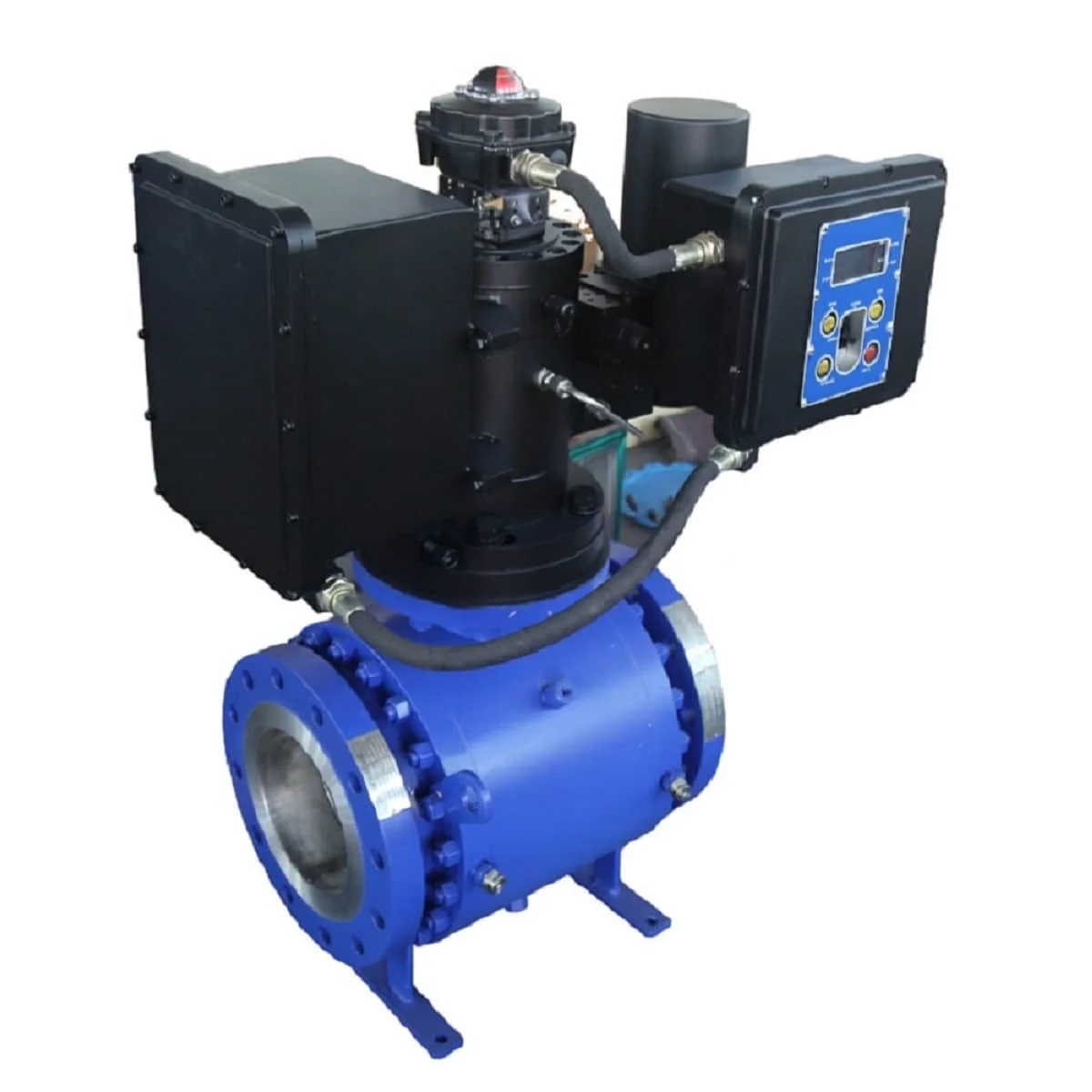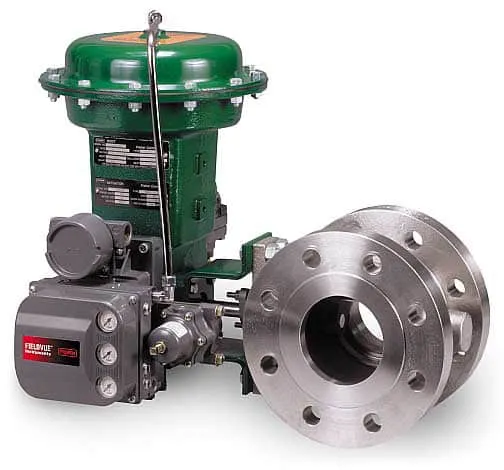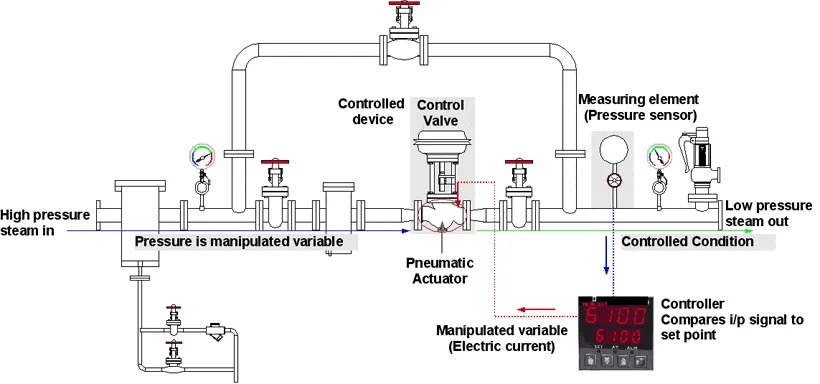
The electric hydraulic v-notch control valve offers precise flow control for slurries and corrosive media, with a segmented v-notch ball for high rangeability up to pn40 and 450°c.
The electric hydraulic v-notch control valve offers precise flow control for slurries and corrosive media, with a segmented v-notch ball for high rangeability up to pn40 and 450°c.
| Size | 8" |
|---|---|
| Rating | 300LB |
| Body & Bonnet | ASTM A350 LF2 |
| V-Notch Ball | ASTM A182 F316 + TCC 90° Notch |
| Stem | ASTM A564 17-4PH |
| Seat | ASTM A182 F316 + TCC |
| Spring | Inconel X-750 |
| Actuation | Electric Hydraulic Actuator |
The Electric Hydraulic V-Notch Control Valve is a high-performance segmented ball valve engineered for precise flow regulation in demanding industrial applications, featuring a V-notch ball design for exceptional throttling accuracy. This V-notch control valve delivers an equal percentage flow characteristic with a rangeability of up to 300:1, making it ideal for handling slurries, fibrous media, and corrosive fluids in oil and gas, pulp and paper, and chemical processing industries. Powered by an electric-hydraulic actuator, it combines rapid response (under 1 second) with precise positioning (±1% accuracy), ensuring reliable precision flow valve performance in high-pressure systems up to PN40 and 450°C.
Constructed from ASTM A216 WCB carbon steel or ASTM A351 CF8M stainless steel, the valve features a segmented ball with a contoured V-notch (15°, 30°, 60°, or 90°) for tailored Cv values up to 10,000, supporting sizes from 1" to 24" (DN25 to DN600) with flanged, wafer, or butt-weld ends per ASME B16.5 and B16.25. Compliant with IEC 60534 for control valve performance, API 608 for ball valves, and ASME B16.34 for pressure-temperature ratings, it undergoes hydrostatic shell testing at 1.5x rated pressure and seat leakage verification per API 598 for Class VI shutoff. The V-notch’s shearing action prevents clogging by cutting through fibers and solids, making it a top choice for industrial throttling valve applications in abrasive or viscous media.
The valve’s corrosion resistance is enhanced by Stellite #6 hard-facing on the ball and seat, resisting erosion from slurries or corrosive gases, while optional PTFE or EPDM seats ensure bubble-tight sealing for low-temperature or chemical applications. The electric-hydraulic actuator, with ATEX/Exd certification and compatibility with HART, Foundation Fieldbus, or 4-20mA signals, integrates seamlessly into DCS or PLC systems, providing real-time diagnostics via LVDT feedback. Hydraulic damping reduces vibration, extending actuator life by up to 50% compared to pneumatic systems. Tensile strengths above 515 MPa and yield strengths of 205 MPa ensure durability under cyclic loading, validated by nondestructive testing (RT, UT, MT, PT) per ASME Section V.
Compared to globe or eccentric plug valves, the segmented ball valve offers a 70% weight reduction, lower torque requirements, and reduced pressure drop, improving energy efficiency in high-flow systems. Its retainerless body eliminates leak paths, enhancing safety for hazardous fluids, while anti-cavitation trims and low-noise cages mitigate damage in high-pressure differential applications. Custom features like cryogenic extensions for LNG service (-196°C) or bellows seals for zero-emission compliance ensure versatility. The valve’s ability to handle high-viscosity fluids and particulates without clogging reduces maintenance costs by 30-40% in precision flow valve setups, with seat life exceeding 100,000 cycles.
Addressing challenges like cavitation, media buildup, and flow instability, the electric hydraulic V-notch control valve incorporates a robust packing system and hydraulic override for emergency manual operation. Surface treatments like 3LPE or epoxy coatings protect against external corrosion in offshore or buried pipelines, meeting EPA low-emission standards. Whether throttling slurry in mining operations or regulating steam in power plants, this industrial throttling valve delivers cost-effective, high-reliability performance, ensuring precise flow control and long-term durability for global industrial applications.
Engineered for precise throttling with V-notch shear action and electric-hydraulic actuation.
Control valves are the most common final control elements in process control industries, manipulating fluid flow to maintain system stability and efficiency.
The control valve manipulates flowing media such as gas, steam, water, or chemicals to compensate for load disturbances and keep the process variable close to the desired set point.
Although they are vital for process performance, control valves are often overlooked due to the complexity of fluid mechanics, metallurgy, noise control, and piping design involved in demanding applications.
A control loop typically consists of a sensor, a transmitter, a controller, and the final control element. The valve acts as the “muscle” of the system, executing the corrective signals received from the controller.
In an automatic control system, sensors are the eyes, the controller is the brain, and the final control element—the valve—is the hands. While indispensable, it is sometimes the least understood part of the loop.
Control valves automatically regulate pressure and flow rate in process systems. They are essential final control elements in industrial automation, ensuring reliable performance and maintaining desired process conditions.

Control valves are available for any pressure class. For plants operating with pressure and temperature combinations that require Class 300 valves, all control valves may be selected as Class 300 for interchangeability. However, if system conditions do not exceed Class 150, higher ratings are not necessary.
Globe valves are most commonly used for control applications, typically featuring flanged ends for easier maintenance. The valve disk is actuated by hydraulic, pneumatic, electrical, or mechanical systems, modulating flow by adjusting the position of a plug relative to the valve port.
In modern process plants, hundreds or thousands of control loops work together to maintain variables such as pressure, flow, level, and temperature. Each loop must stay within a defined range to ensure consistent product quality, while minimizing the effect of disturbances caused by system dynamics or interactions between loops.
To reduce disturbances, sensors and transmitters monitor process variables, feeding information to a controller. The controller calculates corrective actions, which are executed by the control valve, the final control element of the loop.
Maintains pressure and flow rate within safe operating limits to ensure process stability.
Globe valves are standard for control. Discs and plugs are precisely actuated to modulate flow effectively.
Works as the final control element, responding to controller signals to implement process corrections.
Flow control valves, also known as regulating valves, are essential components in fluid systems where precise control of flow rate is required.
A flow control valve adjusts the rate of fluid flow in a system. These valves are crucial in processes requiring stable and accurate control of liquid or gas flow, ensuring system efficiency and safety.
A pneumatic flow control valve combines a valve and an actuator, using compressed air to regulate flow. This design enables fast response times and high precision, making it ideal for automated systems.
Technically, a flow control valve regulates flow rate, which can indirectly influence pressure within a system. By restricting fluid movement, the valve creates a pressure drop upstream.
However, its primary function is flow management, not pressure reduction. If precise pressure regulation is required, specialized pressure-reducing valves should be considered alongside flow control valves.

The diagram below illustrates how a control valve regulates the flow rate in a pipeline. The controller compares the actual flow with the desired setpoint and adjusts the valve accordingly. Similar arrangements are used for other variables like temperature, pressure, and liquid level.
Sensors measure process conditions such as flow, pressure, or temperature.
Receives input, compares with setpoint, and sends corrective signals to the valve.
Modulates flow by adjusting valve opening, ensuring stable operation.
Control valve arrangements are not limited to flow regulation. They can be applied to manage temperature, pressure, level, and flow rate — the most common controlled variables in industrial process systems.
Different valves serve specific functions such as isolation, throttling, pressure relief, or directional change. The table below summarizes common valve types and their typical applications.
DC = Directional Change
IoS = Isolation or Stop
PR = Pressure Relief
TH = Throttling
| Valve Type | IoS | TH | PR | DC |
|---|---|---|---|---|
| Gate | YES | NO | NO | NO |
| Globe | YES | YES | NO | YES (1) |
| Check | (2) | NO | NO | NO |
| Stop Check | YES | NO | NO | NO |
| Butterfly | YES | YES | NO | NO |
| Ball | YES | (3) | NO | YES (4) |
| Plug | YES | (3) | NO | YES (4) |
| Diaphragm | YES | NO | NO | NO |
| Safety Relief | NO | NO | YES | NO |
Notes:

| Organization | Standard | Description |
|---|---|---|
| ANSI | American National Standards Institute | General industrial standards |
| API | American Petroleum Institute | Standards for oil and gas industry |
| ASME | American Society of Mechanical Engineers | Boiler and pressure vessel codes |
| BS | British Standards | UK national standards |
| GB, JB, HG | China Valve Standards | Chinese national and industry standards |
Upstream, midstream, and downstream operations, including drilling, refining, and transportation.
Handling corrosive and hazardous chemicals in various chemical plants.
Steam, water, and fuel systems in thermal, nuclear, and hydroelectric plants.
Municipal water supply, wastewater treatment, and industrial water management.
Heating, ventilation, and air conditioning systems in commercial and industrial buildings.
Sterile and hygienic applications, precise flow control in sensitive industries.